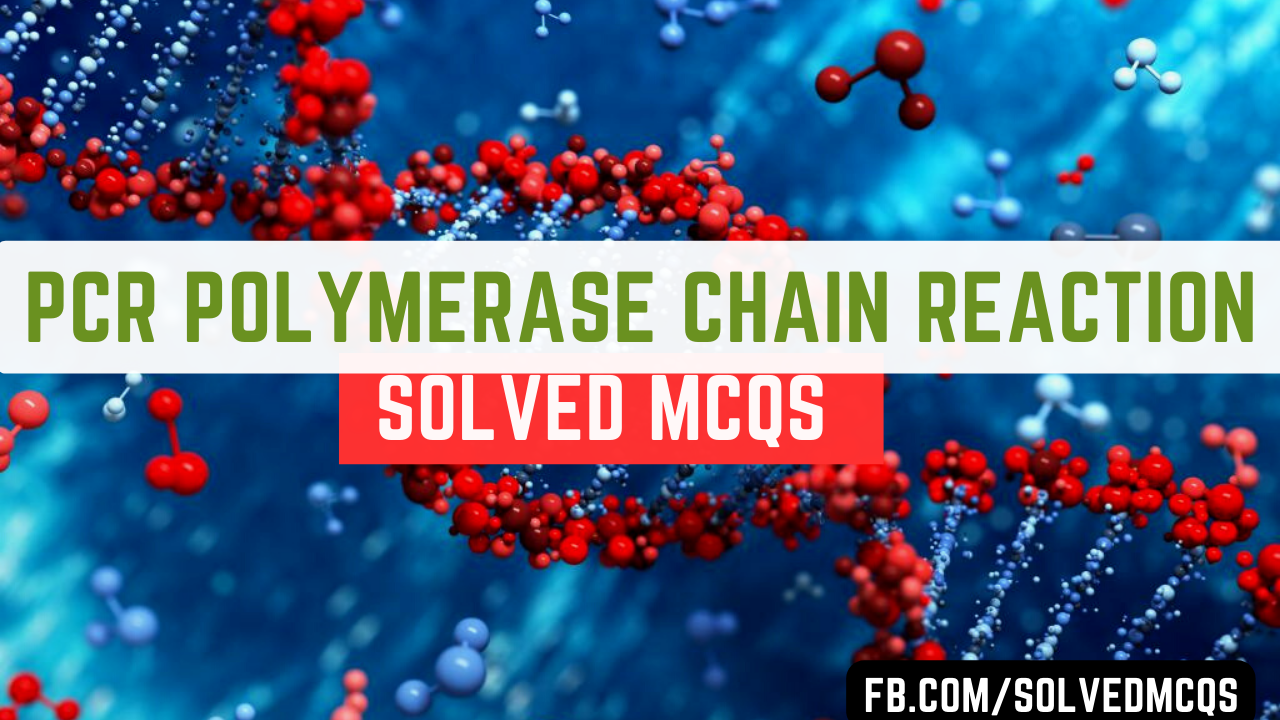PCR (Polymerase Chain Reaction) Multiple Choice Questions MCQs with Answers 1. Who developed the PCR technique? a. Kary Mullis...
PCR (Polymerase Chain Reaction) Multiple Choice Questions MCQs with Answers
1. Who developed the PCR technique?
a. Kary Mullis
b. Kohler
c. Milstein
d. Altman
Answer: a. Kary Mullis
2. Choose the correct statement about Polymerase Chain Reaction (PCR):
a. DNA degradation technique
b. DNA amplification technique
c. DNA sequencing technique
d. All of these
Answer: b. DNA amplification technique
3. Thermus aquatics is a source of:
a. Taq Polymerase
b. Vent Polymerase
c. Primase enzyme
d. None of these
Answer: a. Taq Polymerase
4. Which of the following is not the thermostable Polymerase?
a. Taq Polymerase
b. Vent Polymerase
c. DNA polymerase III
d. Pfu Polymerase
Answer: c. DNA polymerase III
5. Choose the basic requirement for PCR reaction?
a. DNA sequence to be amplified
b. Two oligonucleotide primers
c. Heat stable DNA polymerase
d. All of these
Answer: d. All of these
6. Pfu and vent Polymerase are more efficient than Taq Polymerase because of:
a. More efficient Polymerase activity
b. Proofreading activity
c. DNA sequencing
d. DNA degradation
Answer: b. Proofreading activity
7. Which is the first step of PCR?
a. Denaturation
b. Annealing
c. Primer extension
d. None of above
Answer: a. Denaturation
8. At what temperature does denaturation of DNA takes place?
a. 40°C to 55°C
b. 72°C to 74°C
c. 90°C to 98°C
d. 10°C to 20°C
Answer: c. 90°C to 98°C
9. The process of bonding primer to the denatured strand is known as:
a. Denaturation
b. Annealing
c. Renaturation
d. Binding stage
Answer: b. Annealing
10. Choose the correct statement regarding PCR:
a. Denaturation involves heating at 90 to 98°C
b. Primer extension occurs at 72°C
c. Annealing involves the binding of primer between 40 to 60C°C
d. All of these
Answer: d. All of these
11. Polymerases commonly used for PCR are obtained from…?
a. Escherichia coli
b. Thermus aquaticus
c. Saccharomyces cerevisiae
d. Homo sapiens
Answer: b. Thermus aquaticus
12. Denaturation of DNA double helix takes place at what temperature?
a. 54°C
b. 94°C
c. 60°C
d. 84°C
Answer: b. 94°C
13. Which of the following is an application of PCR?
a. Site-specific recombination
b. Site-directed mutagenesis
c. Site-specific translocation
d. None of these
Answer: b. Site-directed mutagenesis
14. Which is used in reverse transcriptase Polymerase chain reaction?
a. mRNA as a template to form cDNA
b. RNA as a template to form DNA
c. DNA as a template to form sDNA
d. All of these
Answer: a. mRNA as a template to form cDNA
15. At what temperature do annealing of DNA and primer take place?
a. 42°C
b. 54°C
c. 74°C
d. 96°C
Answer: b. 54°C
16. How many DNA duplex is obtained from one DNA duplex after 4 cycles of PCR?
a. 8
b. 16
c. 32
d. 64
Answer: b. 16
17. Which of the following primers are used for the process of a polymerase chain reaction?
a. Single-stranded DNA oligonucleotide
b. Double-stranded RNA oligonucleotide
c. Single-stranded RNA oligonucleotide
d. Single-stranded DNA oligonucleotide
Answer: d. Single-stranded DNA oligonucleotide
18. Polymerase chain reaction (PCR) is a laboratory technique used for:
a. Make multiple copies of a segment of DNA
b. Used to amplify, copy a specific DNA target
c. Constructing RAPD maps
d. All of these
Answer: d. All of these
19. Choose the INCORRECT association about PCR:
a. Template – double-stranded DNA
b. Polymerase – Taq polymerase
c. Primer – oligonucleotide
d. Synthesis – 5’ to 3’ direction
Answer: a. Template – double-stranded DNA








COMMENTS